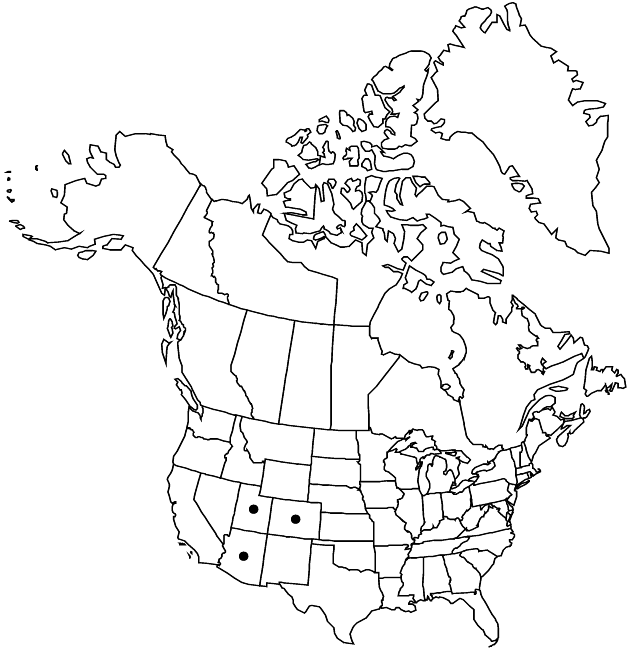Hymenoxys helenioides
Bull. Torrey Bot. Club 31: 481. 1904.
Perennials, 20–50 cm (polycarpic; usually with moderately branched, woody caudices). Stems 1–5(–10+), green throughout or lightly purple-red-tinted proximally, branched distally, ± hairy. Leaves: blades simple or lobed (lobes 3), glabrous or sparsely hairy, gland-dotted (basal leaf bases sparsely, if at all, long-villous-woolly); mid leaves usually lobed (lobes 3, terminal lobes 2–5.5 mm wide), sometimes simple. Heads 5–50+ per plant, in paniculiform to corymbiform arrays. Peduncles (2.5–)4–7.5 cm, ± hairy. Involucres subhemispheric to hemispheric, 9–12 × 12–18 mm. Phyllaries in 2 series, unequal; outer 10–15, basally connate 1/4–1/3 their lengths (weakly keeled), lanceolate, 7.5–11 mm, apices acuminate; inner 13(–17), obovate, 5–8 mm, apices acuminate to mucronate. Ray florets 10–16; corollas yellow to yellow-orange, 17–31 × 5–11 mm. Disc florets 50–150+; corollas 3.5–5.5 mm. Cypselae narrowly obpyramidal, 2.5–3.5 mm; pappi of 5–7 obovate to lanceolate, aristate scales 2.5–4 mm. 2n = 30.
Phenology: Flowering Jun–Aug.
Habitat: Roadsides, open areas, edges of forests
Elevation: 2200–3000 m
Distribution

Ariz., Colo., Utah.
Discussion
Selected References
None.